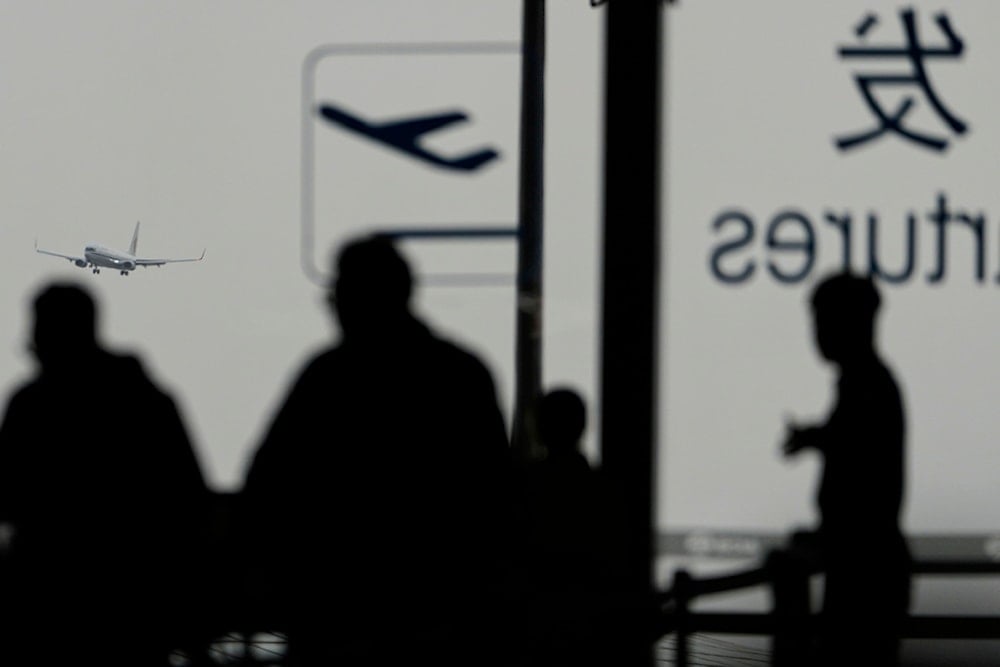China plans new airport in Hegang to boost Russia trade, local economy
China is constructing Luobei Airport in the border city of Hegang to revive its economy and support growing trade with Russia.
-

An Air China passenger jet prepares to land at the Beijing Capital International Airport Terminal 3 in Beijing, China, Saturday, April 12, 2025 (AP Photo/Ng Han Guan)
China is pressing ahead with a strategically important infrastructure project in its northeastern rust belt, seeking to align local revitalization efforts with the broader expansion of economic ties with Russia. In the city of Hegang, located in Heilongjiang province and bordering Russia, construction is set to begin soon on Luobei Airport, a move that marks both a regional development push and a geopolitical maneuver. The project has received approval from top authorities, including the State Council and the Central Military Commission, and is expected to be operational by 2027.
Classified as a feeder-scale Class 4C facility, Luobei Airport will feature a 2,500-meter runway and a 5,008-square-meter terminal building. With an estimated investment of 1.2 billion yuan, the airport is designed to accommodate 450,000 passengers and 1,600 tons of cargo annually, along with approximately 5,360 aircraft movements per year. These specifications convey Beijing's intent to integrate remote and economically distressed regions like Hegang into wider national and cross-border logistics and supply chains.
Border Hub
Hegang's location gives it a strategic advantage. The city already hosts two national-level land ports and lies just south of the China-Russia border. This positioning makes it an ideal candidate to benefit from growing bilateral trade, which reached $244.8 billion in 2024. As the South China Morning Post noted, “Hegang, which hosts two national-level land ports, could benefit from growing bilateral trade... by becoming a regional logistics hub.”
The airport project is not a stand-alone effort. It complements a larger development strategy under the Heilongjiang pilot free trade zone, which includes plans for a China–Russia border logistics hub aimed at facilitating e-commerce, bulk freight consolidation, and integrated transport networks. These initiatives reflect China's commitment to deepening its commercial and strategic partnership with Russia, particularly amid shifting global trade alignments.
Revival Strategy
For Hegang, the Luobei Airport project is more than a symbol of national investment; it is a potential turning point in the city's troubled trajectory. Once a thriving coal-mining center emblematic of China's state-led industrial boom, Hegang has faced a steep decline in recent years. The collapse of heavy industry, combined with outmigration and aging demographics, has left the city hollowed out. Official figures show that Hegang's population dropped from about 1.1 million in the 2010s to 850,000 in 2025, while its GDP contracted from 40.92 billion yuan ($5.7 billion) in 2022 to 38.02 billion yuan ($5.3 billion) in 2024.
These economic woes have had a visible impact: Hegang made headlines across Chinese social media for its “cabbage-price” homes, with apartments selling for as little as a few thousand yuan, making it a symbol of the stark regional inequality in China's economic landscape.
Read more: China's exports beat growth expectations, hitting 5.9% in H1 2025
In this context, Luobei Airport represents a dual-purpose strategy: to strengthen China-Russia trade infrastructure and to reverse the socioeconomic decline of one of China's most distressed urban centers. It reflects a broader trend of using state-backed infrastructure to stimulate growth in fading industrial zones, an approach that continues to define China's domestic policy toolkit.

 3 Min Read
3 Min Read







